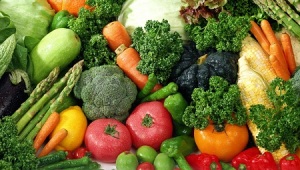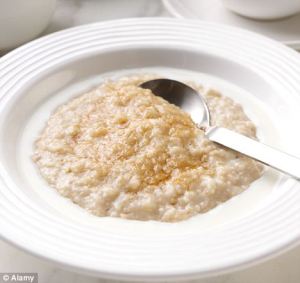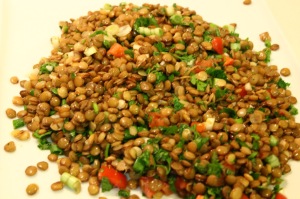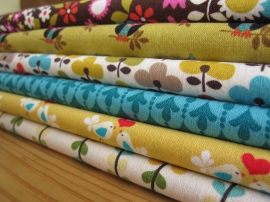 Fibre is very, very important for the health of the gut, can help prevent constipation, reduce cholesterol, prevent bowel cancer, aid with weight loss and weight maintenance and slow down the transit of food through the gut so prolonging the time available for the gut to absorb nutrients from the passing food into the blood. It’s amazing stuff.
Fibre is very, very important for the health of the gut, can help prevent constipation, reduce cholesterol, prevent bowel cancer, aid with weight loss and weight maintenance and slow down the transit of food through the gut so prolonging the time available for the gut to absorb nutrients from the passing food into the blood. It’s amazing stuff.
 But we hear so much about the different types that it can get confusing….soluble, insoluble, digested, undigested….aaargh! What do we really need to know?
But we hear so much about the different types that it can get confusing….soluble, insoluble, digested, undigested….aaargh! What do we really need to know?
In essence, 18-24g per day is what we need. This can be obtained quite happily through a varied, balanced diet in line with the Eatwell Plate (Food Pyramid for our U.S. based friends!). Fruit, vegetables, beans, lentils, pulses, wholemeal bread, seeds and grains are all great sources of fibre and the mixture you need of soluble and insoluble fibre should be gotten through including a range of these foods in your regular diet.
SOLUBLE FIBRE
Soluble fibre can be partially digested by your body. It may help reduce the amount of cholesterol in your blood. If you have constipation, gradually increasing sources of soluble fibre – such as fruit and vegetables, oats and golden linseeds – can help soften your stools and make them easier to pass. This is the glue of your poo, if you like! Water is needed to help with this too.
Foods that contain soluble fibre include:
* oats, barley and rye
* fruit, such as bananas and apples
* root vegetables, such as carrots and potatoes
* golden linseeds
INSOLUBLE FIBRE
Insoluble fibre cannot be digested. It passes through your gut without being broken down and helps other foods move through your digestive system more easily. It is the fabric of your poo!
Insoluble fibre keeps your bowels healthy, helps prevent digestive problems and slows down food transit. If you have diarrhoea, you should limit the amount of insoluble fibre in your diet.
Good sources of insoluble fibre include:
* wholemeal bread
* bran
* cereals
* nuts and seeds (except golden linseeds)
Eating foods high in fibre will help you feel fuller for longer. This may help if you are trying to lose weight or manage your weight after having lost it.
If you need to increase your fibre intake, it’s important that you do so gradually. A sudden increase may make you produce more wind (flatulence), leave you feeling bloated and cause stomach cramps. Too much fibre can prevent your body from absorping nutrients effectively causing deficiency problems so don’t over-do it.

It’s also important to make sure you drink plenty of fluid. You should drink approximately 1.5-2 litres (six to eight glasses) of fluid a day, or more while exercising or when it’s hot.
Hope this helps!
http://www.nhs.uk/chq/pages/1141.aspx?CategoryID=51&SubCategoryID=167
Serves 4

Delicious, crunchy and packed with fibre, protein, iron and folate.
With the weather starting to turn warmer, even if only sporadically and for 2-3 days out of every month in the UK, this weekend was so beautiful that it just wasn’t soupy weather! I decided to make a nice salad instead – my staple lunch during the summer months being a plate of different mixed salads like those you might see in a health food/wholefood cafe.
You can use green or brown lentils in this salad and these types are especially good in salads and casseroles because they hold their shape well after cooking (yellow and red lentils or split peas have a tendency to go mushy making them better in soups and dahls). They also lend it a really nice crunchy texture and nutty flavour which goes beautifully with the crunchy fresh veggies and parsley.
I would eat this salad as a meal on its own, maybe with a tbsp. of low fat hummus, lettuce, cucumber, cherry tomatoes and ½ pitta bread. I have eaten it on the side of a main meal such as baked fish or chicken, lasagne, moussaka or as part of a salad plate with other salads in which case I would have 1-2 tbsps. of salad rather than a large plateful. I have included the nutritional information for the whole recipe here so that you can make your own calculations if you decide to portion the salad differently; e.g. if you were to eat it on the side of a main meal rather than as a salad meal in its own right.Lentils are high in fibre, protein and a multitude of vitamins and minerals including iron, folate and calcium. They are low in fat and, because of the high fibre and protein contents, they can really help your stomach to feel fuller for longer making them a great addition to a lunch time meal as this can curb those afternoon snack cravings.
Normally you would find lentils dried and sold in bags ready for cooking although some supermarkets and specialist food stores such as south Asian supermarkets sell them already cooked in cans. I have used dried lentils so I needed to cook them – if you used canned lentils just miss out the first step and be aware that the canning process probably added extra salt to the overall nutritional content as a preservative.
Ingredients
200g dried green lentils or 2 cans cooked, drained green lentils (480g)
1 red pepper, chopped
1 green pepper, chopped
1 red onion, chopped (or equivalent amount of chopped spring onions)
1 garlic clove, finely diced
2 tbsp. fresh parsley, chopped
–
1 tbsp. olive oil
1.5 tbsp. white wine or cider vinegar
1 tsp. runny honey
2 tsp. lemon juice
Some grated lemon zest (optional)
Ground black pepper
Instructions
1. Place the lentils in a saucepan with 3 times the amount of cold water as lentils. Bring the water to a boil then reduce the heat and boil gently for 35 – 45 minutes, or until the lentils are soft but retain a bit of crunch. Remove from heat, drain off the water and allow to cool for later.
2. Finely chop the vegetables and parsley – these will stay raw so small is better unless you particularly like to eat large chunks of raw onion! Mix these together in a big bowl.
3. In a small bowl, mix together the oil, vinegar, honey, lemon juice, lemon zest (if using) and black pepper. Make sure the honey is well blended with the rest of the ingredients.
4. Pour the dressing over the vegetables and add the cooked lentils once they have cooled sufficiently.
5. Stir everything together and put the salad in the fridge for an hour or two to allow the dressing to infuse the vegetables with flavour.
NUTRITIONAL INFORMATION
per whole recipe
Energy 870 kcal / 3645 kJ
Carbohydrate 132.4g
Fat 15.4g
Protein 54.4g
Total sugar 31.7g
Saturates 3.4g
Fibre 26.0g
Salt 0.1g (check canned lentils for added salt)
NUTRITIONAL INFORMATION
per serving (if serving 4)
Energy 220 kcal / 911 kJ
Carbohydrate 33.1g
Fat 3.9g
Protein 13.6g
Total sugar 7.9g
Saturates 0.9g
Fibre 6.5g
Salt Trace (check canned lentils for added salt)

